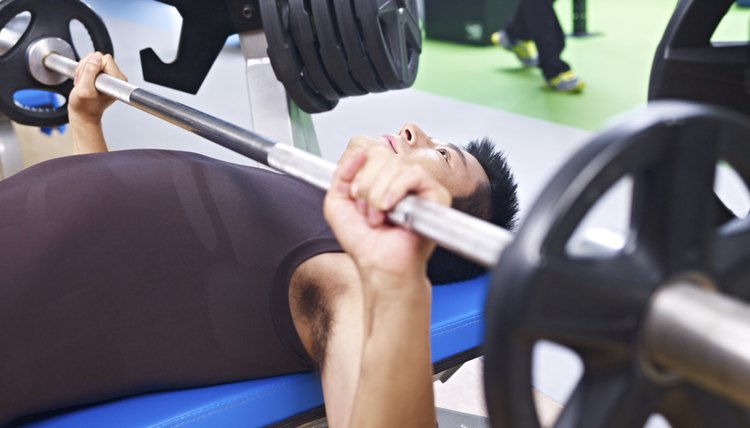What does fact checked mean?
At SportsRec, we strive to deliver objective content that is accurate and up-to-date. Our team periodically reviews articles in order to ensure content quality. The sources cited below consist of evidence from peer-reviewed journals, prominent medical organizations, academic associations, and government data.
- ExRx.net: Pectoralis Major (Sternal Head)
- ExRx.net: Pectoralis Major (Clavicular Head)
- ExRx.net: Pectoralis Minor
- ExRx.net: Serratus Anterior
The information contained on this site is for informational purposes only, and should not be used as a substitute for the advice of a professional health care provider. Please check with the appropriate physician regarding health questions and concerns. Although we strive to deliver accurate and up-to-date information, no guarantee to that effect is made.
How Many Reps Should I Do for a Lean Chest?

The amount of repetitions and load you use when lifting weights has marked effects on the type of benefit you gain from that lift. Using lighter weight and performing more repetitions will improve muscular endurance, while less repetitions and more weight will improve strength. To promote a lean look in the chest, you need to emphasize muscular hypertrophy, which has its own repetition and set pattern.
Hypertrophy
Muscular hypertrophy is an increase in the cross-sectional area of the muscles, in this case the pectoralis major, pectoralis minor and serratus anterior. With increased loads, the muscles respond by building additional layers of protein on the individual muscle fibers, resulting in increased muscle size. This is what provides the lean, defined look in weightlifters.
Reps and Load
While lifting maximal loads will lead to increased muscle size, maximal hypertrophy occurs with just moderate loads. The National Strength and Conditioning Association recommends using about 67 to 85 percent of your one-repetition maximum for a particular exercise. Furthermore, perform between 6 and 12 repetitions are advised to produce muscular hypertrophy and promote a lean chest.
Sets
Strength and conditioning professionals and exercise scientists have had some debate about the appropriate number of sets to perform for maximum muscular hypertrophy. Just one set may be beneficial for some individuals, while six sets are needed to increase muscular size for others. It may take some experimentation to determine what works best for you, but the National Strength and Conditioning Association suggests performing three to six sets.
Rest
The amount of rest you allow between sets can influence the type of muscular adaptation you incur as well. Less rest between sets will promote endurance, while more rest will emphasize muscular strength and power. For maximum hypertrophy, allow 30 seconds to 1.5 minutes of rest between sets, the National Strength and Conditioning Association says.
Exercises
All chest exercises will lead to some degree of muscular hypertrophy. The bench press, military press, butterfly, incline and decline press, dumbbell flies and many more will help promote a lean, defined look in the chest. It is important to vary your program, using several different lifts to force the muscles to continue to adapt in new ways. Furthermore, focus on exercises that target larger muscle groups first, such as the bench press, then move on to smaller muscle group exercises like one-armed dumbbell flies.
References
- "Essentials of Strength Training and Conditioning"; Thomas R. Baechle and Roger W. Earle (editors); 2008
- ExRx.net: Pectoralis Major (Sternal Head)
- ExRx.net: Pectoralis Major (Clavicular Head)
- ExRx.net: Pectoralis Minor
- ExRx.net: Serratus Anterior
Resources
Writer Bio
Graham Ulmer began writing professionally in 2006 and has been published in the "Military Medicine" journal. He is a certified strength-and-conditioning specialist with the National Strength and Conditioning Association. Ulmer holds a Master of Science in exercise science from the University of Idaho and a Bachelor of Science in psychology from Washington State University.
